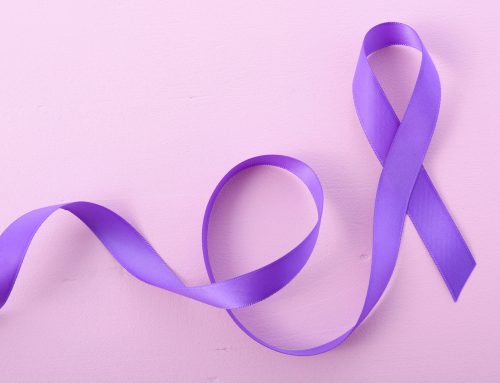According to the National Osteoporosis Foundation (NOF), there are ten million Americans suffering from osteoporosis. Another 34 million are at an increased risk for osteoporosis. This is generally due to low bone mass. If not managed properly, osteoporosis results in bone fractures. Each year in the United States, over 1.5 million fractures occur due to osteoporosis; of these, 700,000 are spinal fractures and 300,000 are hip fractures [1]. In all the patients I have encountered, osteoporosis is a very common condition, particularly in the elderly population. However, it can be managed with proper diet, exercise, vitamin supplements, and of course, education.
What is Osteoporosis?
Osteoporosis is a disease of the bone characterized by low bone mass and weakening of the bone architecture, ultimately leading to bone fragility. Often times the disease is not apparent until a fracture occurs.
Who gets it?
Osteoporosis is generally found in the older age bracket (50 years and up). However, younger populations have also been diagnosed with osteoporosis due to the multiple etiologies of the disease. Women are found to be at a significantly higher risk for osteoporosis. According to the NOF, of the estimated 10 million Americans who have osteoporosis, 80% are women. Osteoporosis can occur in persons of all races and ethnicities. In general, however, people of Northern European descent and Asians are at increased risk.
How does it occur?
There are many reasons why bone density decreases in a person. At its core, osteoporosis occurs when there is a reduction in skeletal mass due to an imbalance between bone formation and bone resorption. One-third of the cases involve a secondary cause to osteoporosis. It may be due to an underlying illness or disease such as hypothyroidism or calcium deficiency. It can also be due to medications such as anticonvulsants or steroid use. Because estrogen provides a protective effect on bone mass maintenance, post-menopausal women usually tend to develop osteoporosis.
How do I know if I have osteoporosis?
Osteoporosis does not always become apparent in someone until they experience a fracture. This is why it is important to know what risk factors you have, that could predispose you to the disease. This not only includes gender and age, but also modifiable risk factors such as smoking and alcoholism, which greatly increases the likelihood that an individual will develop osteoporosis. You should consult your healthcare provider about the possibility of developing osteoporosis if you have any of the following: a family history the disease, early menopause, or had a hysterectomy. Immobility has also been shown to be an increased risk factor for osteoporosis [2].
Often times, a simple fall from a sitting or standing position can result in fractures for patients with osteoporosis. Some patients with osteoporosis who get sudden back pain after bending, lifting, or coughing may be showing signs of a compression fracture in the spine. Do keep in mind that 2/3 of spinal fractures have no symptoms. The pain in osteoporosis-related fractures varies from sharp to nagging and may or may not become more painful with movement.
As physicians, we like to emphasize that patients keep active, especially as they age, in order to prevent debilitation. While it may be more pleasing to stay in the comfort of your home, doing simple activities such as aquatic aerobics or even walking around your local mall, can help with bone strength.
How is it treated?
When you visit your healthcare provider, one of the first tests they may run, especially if they suspect that you have osteoporosis, is bone imaging studies which also assess bone density. They may also order labs to look for secondary causes of osteoporosis, such as thyroid levels. They will likely do this before settling on a treatment. According to the American College of Physicians (ACP), treatment focuses on preventing future fractures and also lifestyle modification. This includes an emphasis on muscle strengthening and weight-bearing exercises, as well as increasing calcium and vitamin D intake [3, 4]. Low intensity aerobic exercises, such as walking and bicycling are recommended for patients with osteoporosis, especially in those who have back problems, as this will help them maintain an upright spinal alignment. According to research, impact exercises can help increase bone marrow density in the hip and spine, in postmenopausal women [5]. Example of impact exercises include dancing, jumping rope, and treadmill walking with stepping exercises.
If further medical intervention is needed, your healthcare provider may prescribe you bisphosphonates. These can help prevent the loss of bone mass. For patients with osteoporotic symptoms of menopause, there are non-hormonal treatments available. Estrogen is considered second-line therapy [6].
A diet with a good source of calcium is helpful in patients with osteoporosis, to encourage bone strength. This includes any dairy products, nuts, and fish. Foods high in calcium include collard greens, sardines, yogurt, and ricotta. Avoid excessive alcohol use as alcohol can interfere with calcium balance and hormonal deficiencies [7].
How do I prevent getting osteoporosis?
Steps to prevent osteoporosis can begin as early as childhood. A healthy intake of calcium and vitamin D in addition to weight bearing exercises helps to strengthen bone and ensure good bone density. The NOF states that modifying risk factors such as cigarette smoking, caffeine, alcohol, a sedentary lifestyle, and even animal protein, can help reduce the risk of developing osteoporosis.
In my experience, the need for vitamin D or calcium supplements is dependent on the patient. For example, if patients have osteoporosis as well as insufficient nutrient intake or digestion problems, then it is necessary to take calcium supplements. Often times many elderly patients will be on calcium supplementation regimens in spite of having elevated calcium levels. It is important to speak with your doctor about ordering a lab test for calcium levels before taking any sort of additional supplements [8].
—
Like what you see? Sign up to join Human Health Project, a community-based, not-for-profit website focused on using peer to peer health support for a healthier you.
—





Fascinating post. I have been pondering about this issue, quite cool post. It’s actually great post. Thanks
Osteoporosis Treatment in Warangal